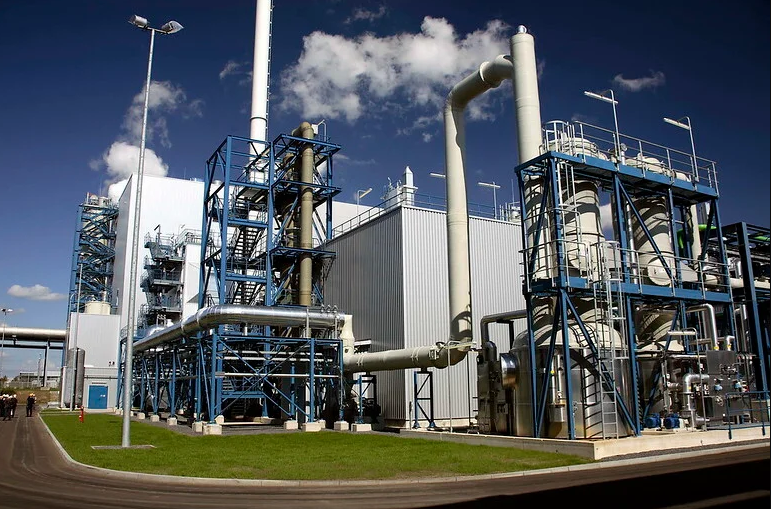Getting to clean: The carbon capture imperative for blue hydrogen
As the world seeks to drastically reduce carbon dioxide emissions, clean hydrogen shows real potential to be part of the solution, particularly for those 20-30% of emissions that may be unmanageable through direct electrification. While hydrogen made from renewable energy can be the cleanest form, many in industry and government are shifting their focus towards blue hydrogen, made from natural gas. This shift presents opportunities for hydrogen’s growth, but also fundamental challenges that could determine whether the fuel provides meaningful decarbonization progress or quickly takes us in the wrong direction.
Despite its potential, hydrogen produced from natural gas poses a significant climate challenge. In fact, if today’s hydrogen industry were a country, it would rank as the sixth-largest emitter of greenhouse gases. To ensure blue hydrogen can be a viable climate solution, the industry will need to overcome several emissions reduction hurdles — including addressing upstream methane emissions , better understanding and mitigating hydrogen emissions and, crucially, delivering effective carbon management, which we’ll dive into here.
Getting to clean: The carbon capture imperative for blue hydrogen Share on XWhile there are numerous important variables at play to get projects right from a particular local perspective, there are three key factors to getting carbon management right from a technical perspective:consistently high carbon capture and storage rates, safely operated and responsibly sited carbon dioxide pipelines and demonstrated permanent storage with high environmental integrity.
Consistently high carbon capture rates
Across the board, global clean hydrogen standards and guidelines broadly agree that blue hydrogen will need to capture around 90-95% of its CO2 emissions in order to hit target carbon intensities. Industry’s own estimates, commitments and technical studies represent that this is achievable, but it hasn’t yet been demonstrated in practice on operating facilities (where rates typically hover around 60%).
This is a high bar for carbon capture efficiency, and one that industry needs to be held accountable for meeting in practice consistently, not just in engineering specs or occasional tests. Not getting this piece right alone drastically cuts the climate benefit of blue hydrogen in the short and long term.
Missing capture rate targets has drastic impacts on the relative climate benefit of switching to hydrogen. For example, even where methane and hydrogen emissions are tightly controlled, if carbon capture is low, blue hydrogen loses more than 50% of its relative benefit over natural gas for industrial heat.
Safely operated and responsibly sited CO2 pipelines
The hydrogen industry needs to be doing everything it can to shorten distances when moving CO2 for storage, but where pipelines are needed, they must be built and operated safely.
Yes CO2 pipelines have a relatively sound track record, yet the significant 2020 rupture of the Denbury pipeline in Satartia highlighted very real weaknesses in both industry practices and regulatory safety oversight.
For example, pipeline operators need to plan for increasingly common severe storm events, geohazards and soil stability issues and improve their leak detection practices and capabilities. A more comprehensive understanding is also needed of the potential zone of impact (the area around a pipeline that might be impacted by a leak) if worst-case scenario incidents occur and significantly improved emergency response and local information sharing protocols.
Unfortunately, the Biden administration’s proposal for improved safety standards for CO2 standards was pulled back earlier this year, leaving a gap in federal baseline protections. And while the American Petroleum Institute is working on a responsive recommended practice, industry best practice guidance alone is inadequate to ensure safety across the board. It’s now a task for industry leaders and policymakers to step up and recognize the importance of strong safety regulations not only for people and the environment who deserve to be protected from harms, but also for industry itself. Strong CO2 pipeline rules will protect these high-cost investments and ensure all pipeline operators are building and operating against the same high safety standards.
Demonstrated permanent storage with high environmental integrity
Finally, rigorous steps must be taken to ensure that the captured carbon that is stored underground is done so safely and permanently.
As early as 2005 and as recently as its 2023 6th assessment report, the IPCC has concluded with high confidence that “appropriately selected and managed” geologic storage sites can permanently store injected carbon. That said, there’s a lot of heavy baggage to unpack in the phrase, “appropriately selected and managed.” What does that look like?
An EDF authored paper breaks down the key technical requirements to do this with environmental integrity — in other words, no leaks, no groundwater pollution, no significant earthquakes — and while adequately identifying and responding to any other potential community impacts. There are dozens of complex technical issues at play to reach these goals — from thoroughly characterizing the subsurface and addressing all possible leak pathways to post-injection monitoring and modeling to demonstrate secure, permanent storage and everything in between.
While carbon storage permits address many of these issues, no one permit alone is adequate to ensure environmental integrity — operators must be consistently committed to comprehensive excellence, even if that means going above and beyond permits. In the absence of these conditions, geologic sequestration will fail to achieve its potential either because of literal leakage, or because project proponents will fail to gain or retain a social license to operate, or both. Neither of which is compatible with the blue hydrogen industry’s growth.
Not all about carbon
Finally, getting the carbon management piece right doesn’t address the full scope of blue hydrogen’s climate risks — upstream methane from natural gas production and hydrogen leakage also play a role due to their own potent climate impacts. What’s more, projects need to work not only for the climate but also for local people and places where they are sited – underscoring the importance of addressing other health-harming air pollutants and meaningful community engagement. Success is about more than simply checking climate boxes.
Despite the real and pressing challenges, the pathway forward for blue hydrogen remains within reach, but only if the industry stays committed to excellence on all fronts. The same rigor that makes blue hydrogen a tough climate proposition today can, with the right actions, transform it into a valuable player in a truly low-carbon energy future.











